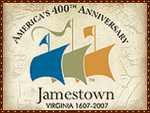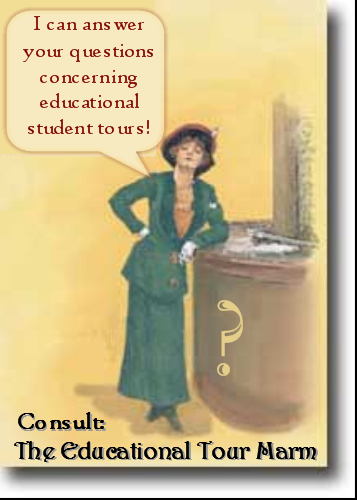















.
.
Phoebe Snow, Advertising Icon Promoting Clean Fuel
Upon the Road of Anthracite
Historyiselementary reasoned correctly that the photo is American by virtue of the African-American Pullman Porter who is assisting the woman in white. The man holding the suitcase is a Red Cap.
However there are three figures, and it is the woman who is the subject of this post as well as the intended subject of the photo.. (I intend to make Pullman Porters and A. Philip Randolph, Jr. the subject of another post sometime this summer.)
One hundred years ago, Phoebe Snow, was a household name. Adults and children would not only recognize her from all the photos and rhyming advertisements for the Delaware, Lackawanna & Western Railroad, but they could also recite the various jingles (very much like the Burma Shave campaign):
- Says Phoebe Snow
- about to go
- upon a trip to Buffalo
- "My gown stays white
- from morn till night
- Upon the Road of Anthracite"
- Now Phoebe may
- by night or day
- enjoy her book upon the way
- Electric light
- dispels the night
- Upon the Road of Anthracite
Phoebe Snow was one of the very first fictitious icons of American advertising created by the DL&W in-house advertising department in 1903. This is was when advertising agencies were in their infancy.
This campaign was a sensation and one of the most enduring campaigns in advertising history; she was even more famous than Aunt Jemima* or Betty Crocker, who were fictitious characters in logos and illustrations. Phoebe became far better known to the public that the other two mentioned because she was photographed and attended civic events and celebrations covered by the press. This coverage gave the impression that she was an actual young woman of a refined background. Many thought she was a debutante or socialite from New York City! People trusted* her because she seemed innocent and pure! There was also a sense of safety conveyed in the ads, afterall, it was a single, young woman who was the traveler. These pre-Madison Avenue era, media-savvy advertising executives knew how to manipulate the public by employing several actresses to appear in person as Phoebe.
One hundred years ago, a public reeling from the pollution of the Industrial Revolution was also interested in cleaner fuel and energy. The ad campaign featuring Phoebe Snow was created to introduce the public to a cleaner railroad experience because of DL&W's use of anthracite coal. Hence the use of the white dress and choice of the name, Snow. Obviously, the target market was the upper middle class and wealthy, although the working classes were also fans of Phoebe's.
Anthracite, or 'hard coal', was discovered in Maunch Chunk, PA in 1791. Both bituminous, 'soft coal', and anthracite have contributed to Pennsylvania's wealth for over 200 years for both fuel and the steel industry. The Lackawanna Road burned 'smokeless' anthracite not just because it was cleaner or for the convenience of the passengers, but it owned its own mines which yielded an abundant supply of anthracite. Before the invention of automatic furnace stokers, no market existed for this hard coal until the 1880's, when the Reading Railroad had perfected a method of burning this waste coal. The Lackawanna essentially turned a waste product into locomotive fuel, which was quite economical. They proceeded to capitalize on this by advertising it as a virtue that would benefit the traveling public. (Nowadays, we would use the term, Environmentally Correct.)
It was a brilliant scheme to increase ridership considering that one, and one's clothing, could still be affected by soot and cinders, if any of the windows of the railroad car were opened!
The federal government during the First World War put an end to the use of anthracite in steam locomotives and so, Phoebe was retired briefly, only to reappear in white military garb during WWII to publicize Lackawanna's war efforts. By that time she had become legendary, and no doubt mothers and grandmothers would recount Phoebe's travels to a new generation of children, who had not grown up with the jingles.
in 1949, DL&W inaugurated its first streamliner passenger run from Hoboken, N.J. to Buffalo, N.Y. and this train was named for Phoebe Snow, (I imagine this was appropriate since Phoebe had traveled to Buffalo so many times in the past!)
The last Phoebe Snow train made its final run in 1966, at the time when the great railroads were either going under or merging with Conrail and later becoming AMTRAK.
How should we promote and advertise clean-burning fuel and alternative energy sources? The Lackawanna ad execs knew their public and not only captured their imagination but their creation became a cultural icon for a generation and beyond. I could well imagine a large Madison Avenue advertising agency creating another such engaging, iconic figure to promote hybrid cars, corn and soybean fuel, and 'green homes' to the American public. Heck, why not re-employ Phoebe Snow to counter our dependency on fossil fuels, for a cleaner environment? The campaign could start with:
Phoebe Snow, On the Road From Anthracite!
Why not try enlisting your students as a creative team to come up with an ad campaign to promote cleaner fuel and energy?
By the way, the Phoebe Snow album cover is just an offering to those disappointed visitors who expected something more on the multi-talented singer, so I won't let you down: Phoebe Laub was born on July 17, 1952 in New York City. She borrowed her stage name from the Lackawanna Railroad's passenger train called Phoebe Snow which ran from Hoboken, NJ to Buffalo, NY. So the singer took on the name of the train!
The Tour Marm
* The image of Aunt Jemima appeared in the 1890's and was of a 59 year old ex-slave by the name of Nancy Green. Ms. Green never appeared in any photos or in public as Aunt Jemima. that I know of. (The image of Aunt Jemima has been updated throughout the years as has Betty Crocker's, who is totally fictitious.)
*Trust is an important element in advertising which is why a cereal company used the image of a Quaker to promote their oats; Quakers (Society of Friends) were considered to be honest.































No comments:
Post a Comment